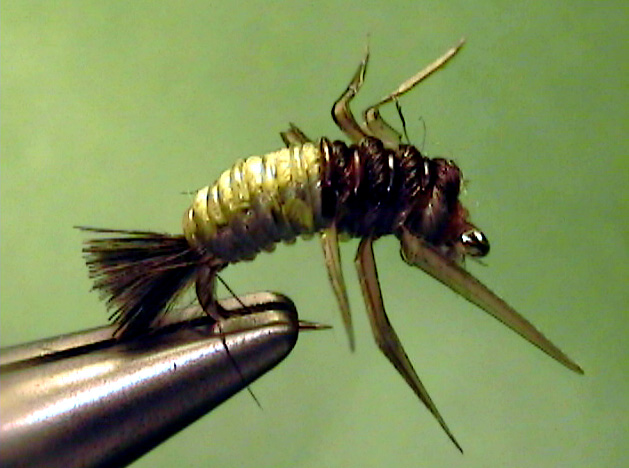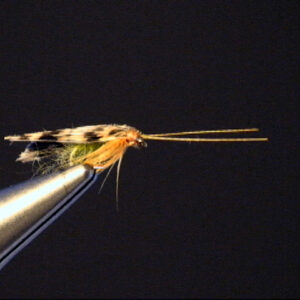Hook Size: 18
rocks that catch their food in the current. The little nets look similar to a
parachute but are not as big as the end of your little finger.Sometimes the larvae are in a shelter they have built near the end of the net and
sometimes they are strung out from their net a few inches on a silk line. They are
very much available for the trout to eat. The shelters are open ended sheds, not
cases that really protect them.
Presentation:
Present the larva imitation in the riffles with some weight attached a few inches
above the fly. An slightly up and across presentation works best in most pocket
water streams. Allow the fly to swing all the way around and downstream near the
bottom. It should come around in the current to the down and across position.
Keep it on the bottom or very near the bottom at all times.
In smooth water, where it’s difficult to get close to the trout without spooking
them, you can use a down and across presentation. You may need to add more
weight. We usually add small spit shot about six inches above the fly. It’s more
difficult to detect a strike this way but it lets you get the fly to the trout before they
are able to see the leader or fly line. Strikes are detected in two ways – by feeling
the fish take the fly or by seeing your line stop abruptly, flicker or move
unnaturally in the current.
You can use a strike indicator if you must. Keep it small and try to set it depth
wise to where the fly stays on or near the bottom. In the fast riffles, the indicator
may need to be positioned on the leader three times the water depth you are
fishing. It’s best if you mend your line and keep the fly ahead or downstream of
the indicator. The indicator usually just stops instead of shooting under the water
but if you question its movement, set the hook.


